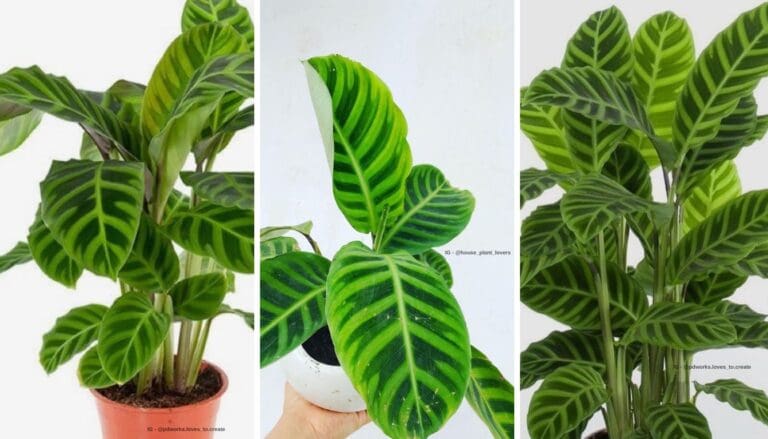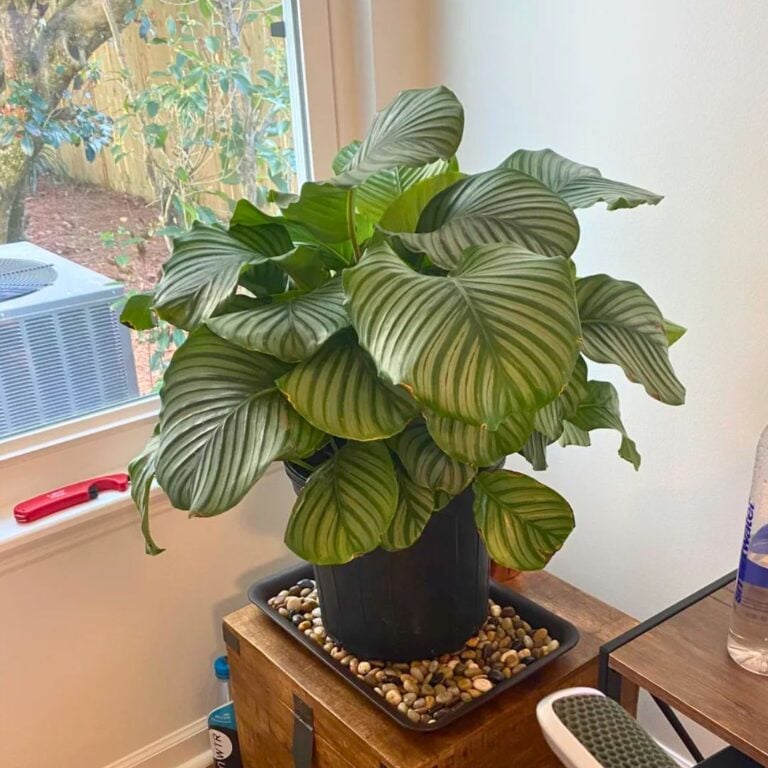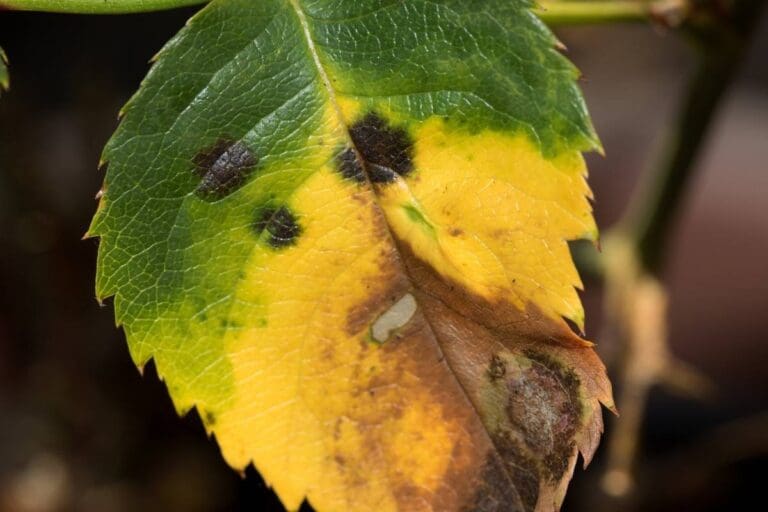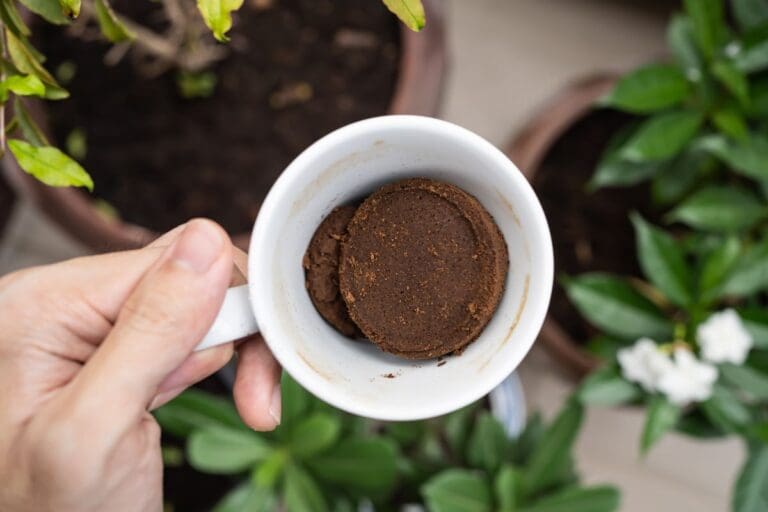Indoor Plant Leaves Shriveling? (Causes+How To Fix)
Most houseplants are easy to care for, and they won’t bother you much. However, if you ignore their basic needs, they will face various problems, and shriveling of leaves is one of them.
But why is your indoor plant leaves shriveling? How can you fix the same?
Intense sunlight, inadequate watering, heat stress, damaged roots, and nutrient deficiency are problems behind shriveling of the indoor plant leaves. Fix the watering schedule, move the plant to bright indirect lighting, maintain the correct temperature levels to prevent shriveling of leaves.
If your houseplants have shriveled leaves and you are unknown about the reasons, this is the right place. This article has covered all the primary reasons behind the problem and how you can resolve it.

Please note: Simplify Plants is reader-supported. Some links in the post are affiliate links and I get a commission from purchases made through links in the post.
Why are the leaves of my indoor plants shriveling?
The most common problems occurring in indoor plants are caused environmentally, i.e., light, temperature, water, and humidity. Damage by humans includes improper fertilization and other physical damages.
Before treating, it is necessary to research the particular plant you own and know its proper and adequate requirements.
Improper lighting
Some plants need bright direct sunlight, whereas some will do great under medium, indirect or low lights. All plants need perfect lighting for good growth and photosynthesis.
A good amount of sunlight will keep the plants healthy as they get energy from it.
Most houseplants are comfortable with bright indirect sunlight. They will thrive happily. A good amount of sunlight is also responsible for healthy chlorophyll.
When the houseplants don’t receive enough light, they won’t receive energy and perform good photosynthesis. As a result, they will start shriveling.
They will even curl upwards to reach the sunlight, and they will lose their color.
But that doesn’t mean you would just expose them to direct sun.
Excessive sun will burn the leaves leading to sunburn. The rule is to provide them bright sunlight, not harsh or scorching heat of the sun.
Solution: If your plant is the one that needs bright indirect sunlight, placing them near a south or west-facing window with transparent curtains or Venetian blinds will be great.
The curtains or Venetian blinds will provide filtered sun, just the way your plant desire.
If your plant requires direct sun, you can skip curtains or blinds.
You can place the plant near the north or east-facing window without any filters. These directions give bright and less intense sun rays.
Heat stress

Most houseplants grow best when they are kept in temperatures between 60°F and 75°F. That is the reason they are grown indoors. They will thrive in such ideal and moderate room temperatures.
Exposing them to temperatures above 75°F will damage their health.
Such high-temperatures result in heat stress in the plant. Excessive heat will make the plants lose water at a much faster rate.
The leaves will start shriveling as the plant constantly tries to conserve the lost water. They will have brown tips and edges due to dehydration.
Plants already lose water due to transpiration. But it is performed to maintain a proper balance between the lost water and the water absorbed from the soil.
Exposing the indoor plants to high heat can affect this balance, causing shriveling of the leaves.
Solution:
- Don’t expose your plant to high heat or high temperatures.
- Keep them away from heaters and radiators.
- Keep them away from the ovens in the kitchen.
Some people keep the plants in the kitchen for high humidity. They should keep a note about heat stress while locating the plant in the kitchen.
Cold drafts
Most houseplants belong to tropical regions. So they will prefer warm environments more than cold climates.
Exposing the plants below the temperatures of 40-50°F will cause shriveling of the leaves in the houseplants. They won’t be able to handle cold drafts.
Solution: Keep your plants away from the direct cold air of the air conditioners and fans.
If you have kept your plant near an open window during cold winds, keep your plants a few feet away from the windows, or rather just close the window.
Inappropriate watering

One of the most common mistakes even experts make is not providing the correct amount of water. Inappropriate watering leads us to 2 different situations – overwatering and underwatering.
The indoor plant leaves can wrinkle due to excess water. This mostly happens with all the houseplants grown in pots lacking drainage holes meant to flow out the excess water.
When a plant is overwatered, the soil becomes soggy, and the roots get clogged by water.
The roots get suffocated due to excess water, for which they fail to absorb water and nutrients from the soil and pass to other portions of the plant.
The plant leaves will start shriveling due to a lack of water and nutrients. In worst cases, the plant undergoes root rot which can kill your plant.
Somewhat the same happens during underwatering. The only difference is the soil doesn’t remain soggy, or the roots are not clogged. Instead, it remains dry and compact.
Due to lack of water, the plant remains dehydrated, and soon the leaves start shriveling.
Both the scenarios will show a common symptom – browning of leaves at the tips and edges. Although some central portions can absorb little water faster, the water doesn’t reach the cells of leaf tips.
Solution: As a general rule, you should water your plants to keep the soil evenly moist but not soggy.
Allow the soil to dry before watering, at least top 1-2 inches of the soil. Keep the soil moisture in check regularly.
Constantly water your plant in the morning, between 7 am to 10 am. Avoid evening or night watering. During the winters, reduce the amount and frequency of watering to less than half, compared to summers.
For example, some succulents like cacti or jade plants can tolerate droughts. Cacti can survive without water for a month.
On the other hand, a Peace Lily will need watering at least once a week to remain moist. Less water won’t cause much harm because treating underwatering is quite effortless compared to overwatering.
How often to water your plants depends on many factors – the type of plant, size of the plant, time of the year, pot material, etc. So, before doing anything, research and know about your plant and then take steps.
Nutrient deficiency

Plants will need nutrients to remain strong and healthy. Lack of nutrients can weaken the plants, causing shriveling of the leaves.
When we use fresh soil at the time of planting or repotting, we prepare nutritious soil. But over time, the nutrients flow out of the soil with each watering. So, it is crucial to provide fertilizers to the plants.
The macronutrients, nitrogen, phosphorous, and potassium, and the micronutrients like zinc, copper, boron, calcium, iron, magnesium, manganese, etc. – all together they are responsible for a plant’s good health.
Lack of any nutrients will cause shriveled leaves. Lack of nutrients will also alter the soil’s pH level and make the plant malnourished.
Solution: To fix this, you should use a fertilizer with adequate amounts of macro and micronutrients. You should also check the soil’s pH level. Most houseplants will enjoy a balanced fertilizer.
There can be other variations, too, depending on your plant type. For a flowering plant, you can use fertilizer having high phosphorous to promote abundant blooms.
For leafy plants, you can use fertilizer high in nitrogen for healthy and strong foliage growth.
Soil
Sometimes, poor soil quality can result in problems like improper pH levels, water not draining well or draining too fast, or the soil being not nutritious.
A good quality soil should carry the correct pH and a good amount of nutrients and be well-draining.
A soil not draining water well or a soil draining water too fast can cause overwatering and underwatering, respectively. Both of these can then lead to shriveling of the leaves.
Solution: Use soil which is having both good drainage and moisture retention.
In your potting medium, you can add peat moss, sphagnum moss, coco coir, perlite, and vermiculite to improve drainage and moisture retention.
Adding mulch or compost to the potting mix will also do the same.
Adding ingredients such as fish emulsion, bone meal, or old aquarium water will help in improving the nutrient content in your potting soil for healthy plant growth.
Damaged roots

The plant’s complete health relies upon the root system. Without strong and healthy roots, the plant won’t stand firm.
Poor, damaged roots will result in shriveled, wilted, and droopy leaves, and they will even fall off.
The roots can get damaged due to root rot. Due to an extended stay in the water, the roots will become soft and mushy and eventually start rotting.
The roots might also get damaged during transplantation.
When you underwater your plant, the roots will show signs of being unhealthy, like dry and brittle leaves.
Solution: Roots can tell many things about the plant’s health, as its health depends upon them.
If the roots feel dry and brittle, proper watering will bring back the roots’ actual health.
If the roots feel soft and mushy and turn dark brown, it is due to root rot. In such cases, you will need to prune all the dark and mushy roots.
Place your plant in a warm area for some days. This will dry up the soil and the plant and will also avoid fungal infections.
If the case is much worse, the soil will leave a nasty, foul smell. You will then need to repot your plant with fresh soil and pot.
Pests and diseases
Pests like aphids, mealybugs, thrips, and spider mites feed on the sap of the leaves. They leave the plant lifeless after feeding. Due to this, the leaves will curl and shrivel due to a lack of those saps.
Fungal and bacterial diseases affect the plant’s roots, leaves, and stems, resulting in shriveled and wrinkled leaves.
Solution: To get rid of the fungus, you can use hydrogen peroxide as an anti-fungal treatment.
Other natural fungicides are baking soda, cinnamon, tea leaves, or dish wash soap. You will have to use commercial fungicides if the natural fungicides don’t work.
You can use neem oil solution, liquid dish soap, and water solution, or herbal sprays to remove them for pests.
You can use neem oil until the pests get removed. It will also keep the plant healthy and avoid fungus infections.
Do not wash the plant after application. But while using dish wash soap, rinse the plant after a few hours of application.
Do not use any soap containing bleaches. That will damage the plant.
How to prevent shriveling of leaves in indoor plants?

The indoor plants are not only grown to make the indoor space colorful. They are also beneficial to humans.
They purify the air by removing toxins. Some plants are also known to repel all sorts of pests and insects.
But, they will only do these jobs if they remain healthy. And they will remain healthy when we follow some preventive measures to avoid shriveling of leaves.
For preventing shriveled leaves:
- You will have to water the plants properly without stressing them. You can avoid watering issues by constantly checking the soil moisture.
- You can note down the watering dates to understand watering frequency. This will help in following a watering routine suitable for your houseplant.
- Give them adequate light, neither more nor less. If sunlight is low, you can use grow lights for your houseplants to give them a good amount of light.
- Fertilize as per your plant’s requirement. They will need more fertilizer during the growing seasons. Some plants go dormant in winters. So you can stop fertilizing at that time.
- Try not to damage the roots. Avoid overwatering and be careful while transplanting. Don’t harm the healthy roots and root balls.
- Use soil that can drain water adequately and hold the required moisture.
- You can mist your plants with neem oil once a month. This preventive measure will help to prevent pest and fungus infections. If anytime the pests or fungus start infesting, the neem oil will prevent further spreading.
Final thoughts
With proper care and maintenance, the plants won’t have any shriveling leaves.
As mentioned earlier, primarily environmental conditions like water, light, temperature, and humidity cause shriveling of the leaves. But it is we who manage these things for them.
Doing things the wrong way will affect the plant’s health. So, to understand the correct methods, you should research your particular plant and understand what they need, how you should provide those requirements, and how to care about them.
Following the preventive measures might not always support good health in the plant as we will make mistakes sometimes. But taking quick actions and taking prevention will stop further shriveling of your indoor plant.
FAQ
Will the shriveled leaves recover back?
Yes, you can recover the shriveled leaves, but it depends on the damage level and how sincerely you will cure and care for the plant.
If the shriveling has just started or is at the medium stage, and the reason is improper light or underwatering, you might save your plant by reconsidering providing light and water.
But, if the damage is worse, it won’t recover. You will have to remove them, which happens due to pests, fungal infections, or overwatering. Proper care and preventive measures will encourage new leaves.
Recommended Garden Supplies
| Product Image | Our Recommended Gardening Supplies | Check Offers! |
|---|---|---|
Top Top
Top
Top
Top
Top
Top
Top
Top | rePotme Houseplant and Tropical Classic Potting Soil Mix | Check Offer On Amazon |
 Top
Top
Top
Top
Top
Top
Top
Top | Espoma Organic Indoor Plant Food | Check Offer On Amazon |
 Top
Top
Top
Top
Top
Top
Top
Top | GooingTop LED Grow Light 6000K Full Spectrum Clip Plant Growing Lamp | Check Offer On Amazon |
 Top
Top
Top
Top
Top
Top
Top
Top | Soil Moisture Meter | Check Offer On Amazon |
 Top
Top
Top
Top
Top
Top
Top
Top | Govee Hygrometer Thermometer, Bluetooth Enabled! | Check Offer On Amazon |
 Top
Top | LEVOIT Humidifiers for Large Room(Best For Plants) | Check Offer On Amazon |
 Top
Top
Top
Top
Top
Top
Top
Top | Upgraded DIY Automatic Drip Irrigation Kit, 15 Potted Houseplants Support | Check Offer On Amazon |
 Top
Top
Top
Top
Top
Top
Top
Top | Stainless Steel Heavy Duty Gardening Tool Set | Check Offer On Amazon |
 Top
Top
Top
Top
Top
Top
Top
Top | Bonide Insecticidal Soap | Check Offer On Amazon |
 Top
Top
Top
Top
Top
Top
Top
Top | Bonide 32 oz Spray Neem Oil for Organic Gardening | Check Offer On Amazon |
 Top
Top
Top
Top
Top
Top
Top
Top | Garden Safe Fungicide | Check Offer On Amazon |








Greetings! Very useful advice within this article! It’s the little changes that produce the largest changes.
Many thanks for sharing!